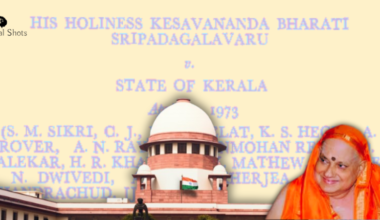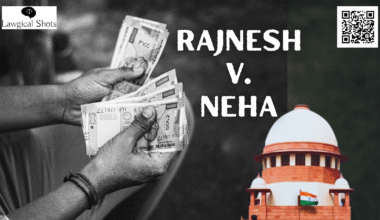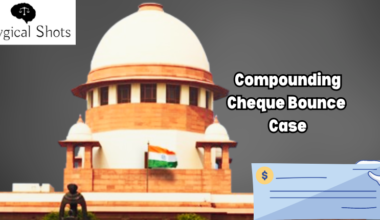This matter came before the Supreme Court of India In Randeep Singh@Rana v. State of Haryana. It was decided by the Bench of three judges- Justice Abhay S. Oka, Justice Ahsanuddin Amanullah and Justice Augustine George Masih. It was a serious criminal matter involving Abduction and Murder. The Trial Court convicted and sentenced to undergo life imprisonment and rigorous imprisonment for 3 years, which was confirmed by the High Court for the appellant and acquittal for other accused. Now see what the Supreme Court found in circumstantial evidence and acquittal for appellant.
Facts in Randeep Singh v. State
The deceased left home to meet his sister but never returned. His car was missing, he got abducted. His son lodged an FIR, and the torso with other body parts of deceased were recovered from a canal.
The present appellants were charged for committing the offences punishable under Section 364, 302, 201, 212 and 120B of the Indian Penal Code (IPC). There were eight accused persons and 29 witnesses.
Supreme Court Analysis of Circumstantial Evidence
Consideration: Evidence of Eyewitness
The prosecution examined the only eyewitness who was the sister of deceased. She mentioned about her brother paying a visit and leaving soon. While he was leaving her house, the deceased sister and her husband went to see him off. The deceased sister also said that the deceased sat in his car and left towards the place where he went missing.
The deceased sister claimed that she and her husband also went towards the place. She noticed a white Maruti car chasing her brother’s car and blocking its way. While the incident of her brother and his belongings being carried away was iterated in detail, the Court noted that she failed to identify the accused persons.
Also when she was confronted with her statement recorded under Section 161 of the Code of Criminal Procedure (CrPC), 1973. She admitted that the following facts which she stated before the court were not mentioned in the statement which was recorded by the police.
Therefore, the Court found the material part of the testimony of the deceased’s sister (the so called eyewitness) full of omissions. The identification of the accused by the deceased sister was very much doubtful in the absence of the test identification parade. For all the reasons recorded above, the evidence of deceased sister was kept out of consideration by the Apex Court.
The Court further highlighted that the husband of eyewitness whom she claimed of accompanying her was not even examined by the Police. Thus, the Court went on to look at the circumstantial evidence in this case.
Circumstantial Evidence
This Circumstantial Evidence was provided by Manager of the Bank whose CCTV footage recorded on camera outside bank premises. In the CCTV footage, there was a white car and the accused seen in the recorded footage. As per Bank, there was an application made by the Police, he got a CD prepared from the CCTV footage and produced the same before the Investigating Officer. After that in a cross-examination the Bank Manager stated that he had no personal knowledge of the contents of the CD and he had not personally seen the CCTV footage. He also stated that he had not signed the parcel of the CD handed over to the Police. He also accepted that the stamp of the Bank was also not put on the CD.
The CCTV engineer claimed that he prepared a CD from the security system of the Bank following the request made by Police. He admitted that the CD could be tampered with, and that neither the Bank Manager nor CCTV engineer had seen the CCTV footage downloaded on the CD. The Court explained that the prosecution failed to produce the certificate under Section 65B of the Evidence Act concerning the CD. The Trial Court and High Court did not see the CCTV footage but relied on it as a crucial evidence. Therefore, the evidence was stated as not admissible in court and to be kept beyond consideration.
A Locus Classicus on Circumstantial Evidence
In this case of Sharad Birdhichand Sarda V. State of Maharashtra, termed a locus classicus on circumstantial evidence wherein the court laid down five principles summing up that circumstances from which the conclusion of guilt is to be drawn should be fully established.
Also the court indicated that the circumstances concerned “must or should” and not “may be” established. The facts established should be consistent only with the hypothesis of the guilt of the accused, that is to say, they should not be explainable on any other hypothesis except that the accused is guilty. The circumstances should be of a conclusive nature and tendency. They should exclude every possible hypothesis except the one to be proved And the last principle was there must be a chain of evidence so complete as not to leave any reasonable ground for the conclusion consistent with the innocence of the accused and must show that in all human probability the act must have been done by the accused.
Even if one of the circumstances forming part of the chain is not proved, the prosecution case cannot be held as established.
So now, what remained in the instant case was the recovery of other body parts by the accused. It is to be noted that that the recovery of the torso and other body parts was not made on the instance of accused. The reason behind it is that, the Investigating Officer stated that he received an information that one dead body was found without head, hands and legs near a village.
This information was given to him on telephone. The evidence of recovery at the instance of the accused is of the Maruti car used in the offence, the weapon used in the offence and recovery of articles of the deceased such as a driving license. After disbelieving the testimony of deceased’s sister, who claims to be an eyewitness, after discarding the evidence of the CD of the alleged CCTV footage and after finding that another eyewitness, though available, has not been examined, the Court exclaimed that it was not possible to sustain the conviction of the accused only based on the evidence of recovery. Moreover, all the circumstances forming part of the chain had not been proved.
Reliance on Inadmissible Evidence
The evidence of the Investigating Offer is relevant for many different reasons. It is a material to state how his evidence has been recorded.
However, Sections 25 to 27 of the Evidence Act state Confession to police officer not to be proved, Confession by accused while in custody of police not to be proved against him and the last, How much of information received from accused may be proved.
The Court questioned the Trial Court for allowing the Investigating Officer to prove the confession made by the accused while they were in police custody. The Court stated that Section 27 is well settled right from the classic decision of the Privy Council in the case of Pulukuri Kotayya & ORS v. King Emperor, relied upon in K. Chinnaswamy Reddy v. State of A.P. It states that only confession made in Court is only admissible. Confession made in Police Custody will not be admissible.
The Ground of the Offence:
is the Court admitted that this was a case of brutal murder. However, the Court added that “the brutality of the offence does not dispense with the legal requirement of proof beyond a reasonable doubt. In this case, there is no legal evidence to prove the involvement of the accused. The Courts can convict an accused only if his guilt is proved beyond a reasonable doubt on the basis of legally Admissible Evidence. There cannot be a moral conviction.”
Conclusion
The Court allowed the appeal to quash and set aside the judgments of conviction passed by Trial Court and affirmed by the High Court.
The Supreme Court case on circumstantial evidence and acquittal is analysed by our intern, Mr. Rushikesh Sawant. He has been assisting the team in bringing informational legal blogs.








